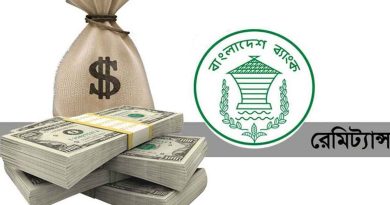Foreign investment in Bangladesh rose by 114% in the first quarter of the current year. During this period, the country received net foreign investment worth $864.6 million, which is 76.31% higher than the previous three months. Compared to the same period last year, this marks a 114.31% increase, according to a report published by the Bangladesh Bank on Thursday (July 10).
According to the central bank’s report, a total of $1.576 billion in foreign funds came into the country as investments during the first three months of the year. Meanwhile, $711.5 million left the country through profit repatriation, inter-company loan repayments, and other means, resulting in net investment of $864.6 million.
For comparison, net foreign investment during January–June of last year was $403.4 million, while the previous quarter (October–December) saw $490 million.
Officials say the interim government has taken several steps to boost foreign investment. These include simplifying access to land and other services. Such reforms may have helped attract more investment. However, they also note that investment could have grown further had there been less uncertainty after the fall of the Awami League government.
Foreign Debt Sees Slight Increase
According to the central bank, foreign debt has risen slightly. Combined foreign debt in both the public and private sectors reached $104.76 billion by the end of March. At an exchange rate of Tk 122 per dollar, this amounts to approximately Tk 12.89 trillion.
In December 2024, foreign debt stood at $103.74 billion. In June 2024, it was $103.41 billion.
Back in December 2023, for the first time, foreign debt crossed the $100 billion mark. A large portion of this debt, taken during the previous government’s term, was high-interest commercial loans. However, the current interim government is leaning more on international institutions for lower-interest loans instead.
As of March 2025:
- Public sector foreign debt stood at $84.89 billion, up from $84.31 billion in December and $82.81 billion in June.
- Private sector foreign debt stood at $19.87 billion, up from $19.42 billion in December. In June last year, it was $20.60 billion.
Support from IMF and Development Partners
In the last week of June, Bangladesh received $1.34 billion from two tranches of an IMF loan. Subsequently, more funds came in from the World Bank, ADB, JICA, and AIIB, bringing the total to over $4 billion in concessional loans.
Thanks to these funds and a rebound in remittance inflows, the country’s gross foreign exchange reserves rose to $31.72 billion at the end of June. According to the IMF’s BPM6 calculation method, the reserves stood at $26.69 billion—the highest in 28 months.
When the Awami League government fell on August 5, 2024, the reserve was at $20.48 billion.
Reserve Falls After ACU Payment
Following a $2.02 billion payment to the Asian Clearing Union (ACU) this week, the gross reserves fell to $29.53 billion, while BPM6 reserves stood at $24.46 billion.






